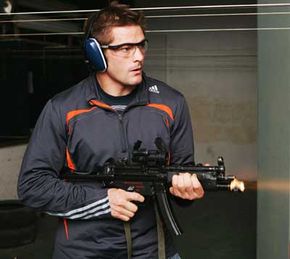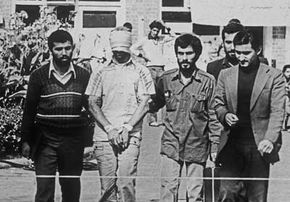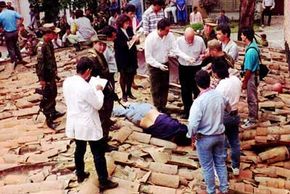The Delta Force is one of two military outfits in the U.S. charged with counterterrorist operations. Like the other, the Navy's Special Warfare Development Group (DEVGRU), Delta Force can deploy at a moment's notice. But unlike DEVGRU, Delta Force doesn't officially exist.
Origins of Delta Force
In the 1970s, the world began to see an outbreak of extremism. Groups like Germany's Red Army Faction and the Palestinian Liberation Organization introduced new words into the global vocabulary — words like terrorism and hijacking.
As a response to the sudden and widespread emergence of terrorist ideologies, U.S. Army Colonel Charles Beckwith proposed that the government create a small, skilled tactical team capable of responding with quick and deadly force to terrorist activities.
In 1977, Beckwith assembled the force along with Colonel Thomas Henry, recruiting from the Green Berets, the Army Rangers and the Airborne divisions. Beckwith created a grueling training course based on that of the British Special Air Service (SAS) — an elite commando unit capable of carrying out highly specialized missions.
Beckwith spent a year as an exchange officer with the SAS and used the group as a model. Today, Delta Force and SAS still serve side by side and exchange members in their cross-training programs. In 1996, Delta Force operators and SAS members stormed the home of the Japanese ambassador to rescue him from hostage-takers in Lima, Peru.
How to Join Delta Force
Delta Force recruits operators from all military branches based on their special skills, like exceptional sharpshooting ability. It's reputed that Delta Force recruits must show 100 percent accuracy in shooting from 600 yards and 90 percent accuracy at 1,000 yards [source: VFW Magazine].
Beckwith also created a 40-mile hike as an endurance test to separate the truly capable from those who had simply managed to remain in training. This method is taken directly from the SAS.
Delta Force holds nationwide recruitment drives several months out of the year, culminating in two selection processes: one in the spring and one in the fall. Following the monthlong selection process, recruits who make it through move on to the operator training course, which is believed to last six months.
Delta Force Organization
Delta Force consists of an A, B and C squadron along with a combat support squadron, signal squadron, aviation platoon and a "funny platoon" — the intelligence-gathering outfit of the Delta Force.
The combat squadrons are composed of smaller units called troops, which specialize in airborne, ground or water insertion, much like the Green Berets. Ultimately, troops can split into small mission teams of up to 12 people and as few as one.
As counterterrorist operatives, Delta Force members receive training in hostage rescue in closed spaces. When they rescue hostages, the hostage-takers are rarely left alive.
Beckwith mandated the simple two-tap method of dealing with terrorists — two shots go into each target [source: VFW Magazine]. In stark contrast to movie or TV representations, Delta Force operators don't spare those who may come back to fight them again.



